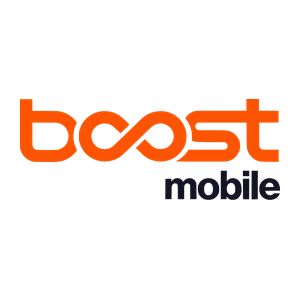
Company Details
Contact Information
Corporate Address
9601 S Meridian Blvd
Englewood, Colorado 80112
Parent Company
About Boost Mobile
Boost Mobile has a unique lineage shaped by international origins and multiple corporate owners. The brand was conceived in 2000 in Australia and New Zealand by entrepreneurs Peter Adderton, Craig Cooper and Kirt McMaster to supply pay‑as‑you‑go cellular service to youth markets. It launched in Los Angeles in 2001 as a joint venture with Nextel Communications, piggybacking on Nextel’s iDEN network. Nextel fully acquired Boost Mobile in 2003 and used it as a youth‑oriented prepaid arm for its U.S. markets. When Sprint acquired Nextel in 2005, Boost Mobile became a subsidiary of Sprint. For much of the late 2000s and early 2010s the brand operated from small inline shops in urban neighborhoods, often adjacent to bus stops or mass‑transit hubs. Stores were typically 400–800 square feet and located in second‑tier strip centers or end caps. This minimalist footprint fit a strategy of targeting cost‑conscious consumers and building recognition through guerrilla marketing.
After 2010 Sprint repositioned Boost as a mainstream prepaid player and invested in a national network of franchised “Boost Mobile Premier” stores. Real estate decisions emphasized visibility on high‑traffic arterials and co‑tenancy with grocery anchors, discount stores and neighborhood services. Deal announcements from that period show Boost leasing 910 sq ft in Glendale, Arizona, around 900 sq ft at Fallbrook Town Center North in California and 1,200 sq ft in Fayetteville, Georgia. These modest store sizes facilitated quick build‑outs and low tenant improvements. Boost also sold phones through national retailers like Walmart and Target and developed kiosks in mall corridors. By 2015 there were more than 2,500 Boost‑branded locations across the United States.
In 2020, Sprint merged with T‑Mobile. Antitrust conditions required Sprint to divest its prepaid business. Dish Network Corporation, now part of EchoStar, purchased Boost Mobile for $1.4 billion, giving Dish entry into the wireless industry. Under Dish ownership Boost undertook a major expansion drive. A 2023 report noted that Boost operated more than 4,000 of its own stores and distributed service through roughly 16,000 partner retail doors. These partners include Walgreens (8,000 locations), Kroger, 7‑Eleven, Walmart, Target, Best Buy and other big‑box chains. A 2023 Dish earnings call also described the chain’s “dealer‑driven model” with more than 4,500 independent dealer locations. In early 2024 Dish’s retail promotions site told customers they could visit “5,000 convenient locations” to find a Boost store. A May 2024 press release reaffirmed that “there are more than 4,000 Boost Mobile locations nationwide.” The brand also began to open slightly larger stores, with at least one 1,956 sq ft lease recorded in Temple Hills, Maryland. These stores offer interactive phone displays and back‑of‑house inventory rooms that require 900–2,000 sq ft and strong 20–40 ft frontages.
Geographically, Boost Mobile has historically been strongest in urban corridors of California, Texas, New York and Illinois but has expanded across all 50 states and Puerto Rico. Under Dish it has targeted suburban strip centers near grocery‑anchored shopping centers and major bus routes. Real estate criteria emphasize high‑visibility sites on daily‑needs arterials with 35,000+ vehicles per day, convenient ingress and egress, strong signage opportunities and co‑tenancy with discounters such as Dollar Tree, Ross Dress for Less or supermarkets like Kroger and Food Lion. Preferred footprints are inline or end‑cap units of 900–1,200 sq ft with at least 20 ft of glass frontage; the company will consider up to 2,000 sq ft for flagship or service‑center stores. Freestanding pad sites or drive‑thru conversions are not typical, but the brand does operate kiosks within big‑box stores, 7‑Eleven and grocery stores. Leases are often five to seven years with options, and sites must support easy parking for quick drop‑in visits. Demographically, Boost targets middle‑income households ($45k–$75k median household income), ethnically diverse neighborhoods and dense daytime populations with strong transit access.
Boost Mobile’s parent, EchoStar, is building its own nationwide 5G network. Future retail strategy integrates phone sales with postpaid plans, home internet equipment and device financing. In 2025 Boost rolled out the “Boost Infinite” postpaid offering and pilot stores to support this service. The pipeline includes new stores in high‑growth Sun Belt markets (Texas, Florida, Georgia and North Carolina) and relocations into grocery‑anchored shopping centers that can accommodate the 900–2,000 sq ft prototype. EchoStar has indicated that Boost will continue to expand via dealers and national retailers. The brand’s history shows a willingness to experiment with various real estate formats—from tiny mall kiosks to 2,000 sq ft inline units—but its core strategy remains securing high‑visibility locations with affordable rents that cater to value‑conscious consumers.
For property owners and brokers, Boost Mobile offers a stable prepaid wireless tenant backed by a Fortune 500 parent. Deals are usually small but can drive cross‑traffic and fill end‑cap or inline vacancies quickly. The company values sites within demographic corridors of young families and urban professionals where demand for prepaid cellular plans is strong. Brokers have reported that Boost is flexible on finishes and signage but demands immediate occupancy and modest tenant improvements. With over 4,000 stores and distribution partnerships extending to 22,000 retail doors, Boost Mobile is a prominent occupant in American strip centers and a bellwether for consumer wireless trends.

